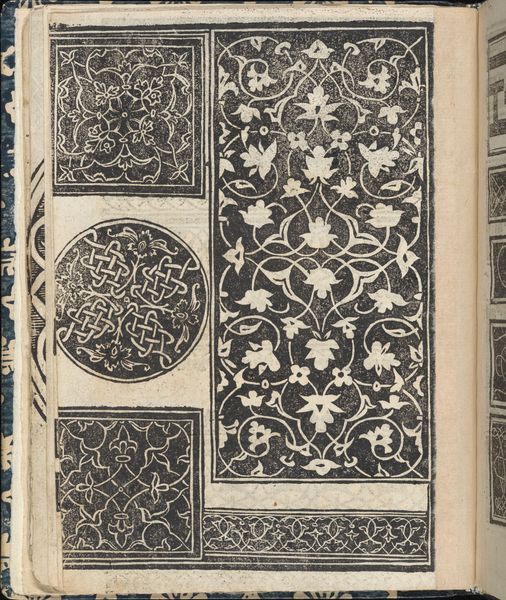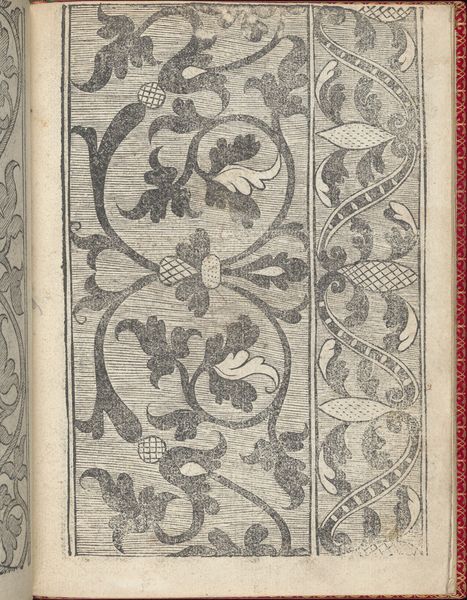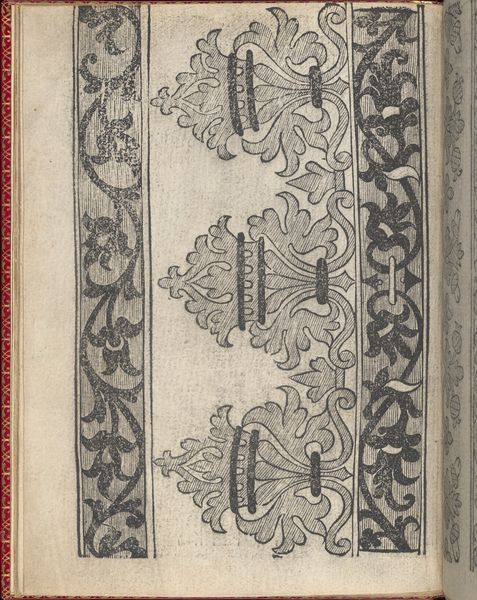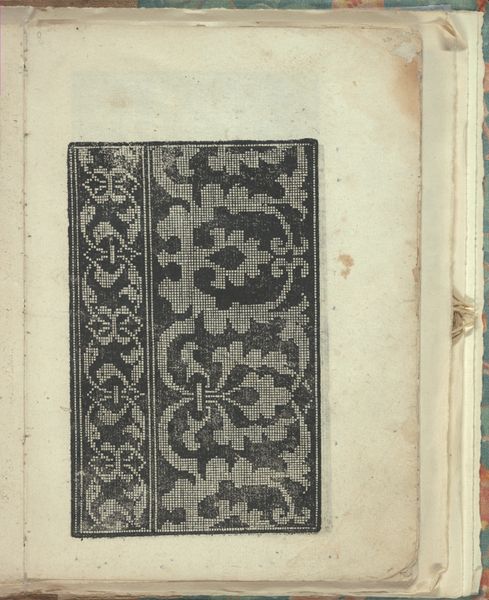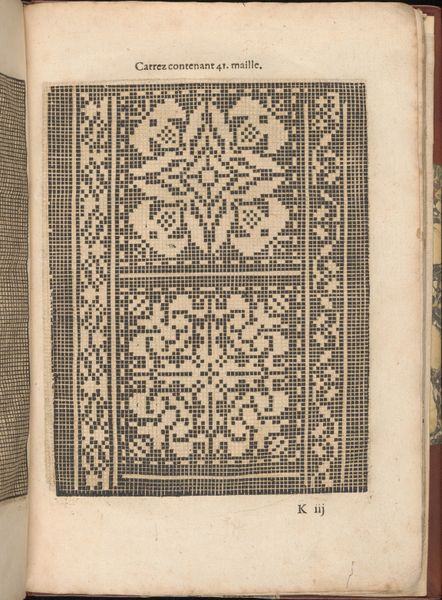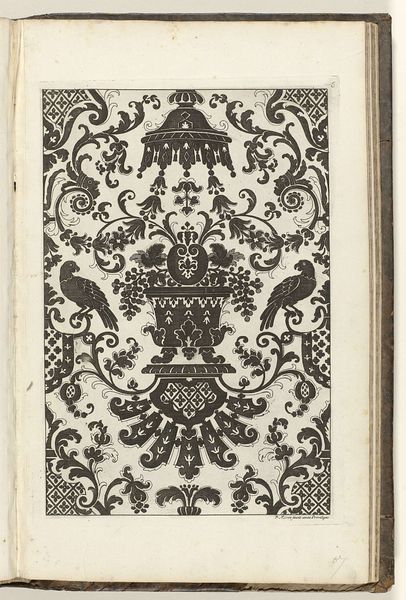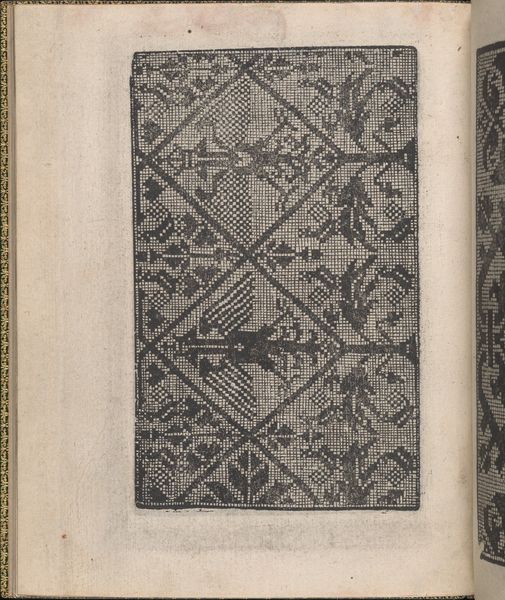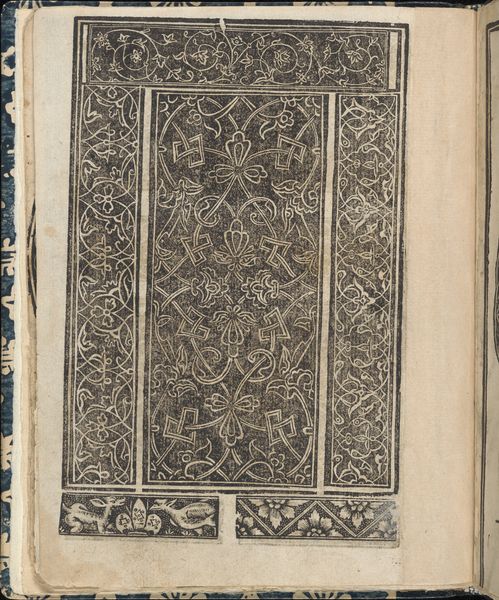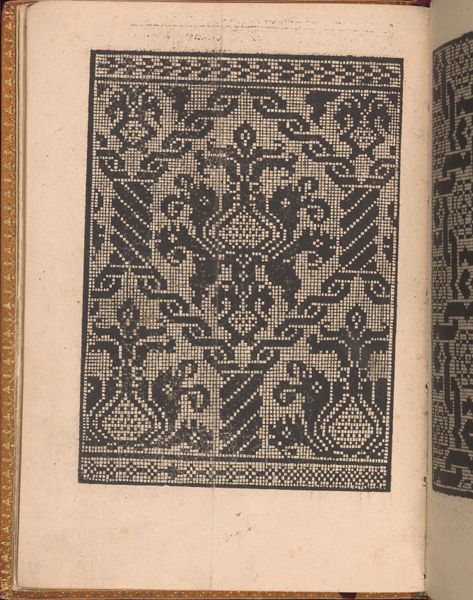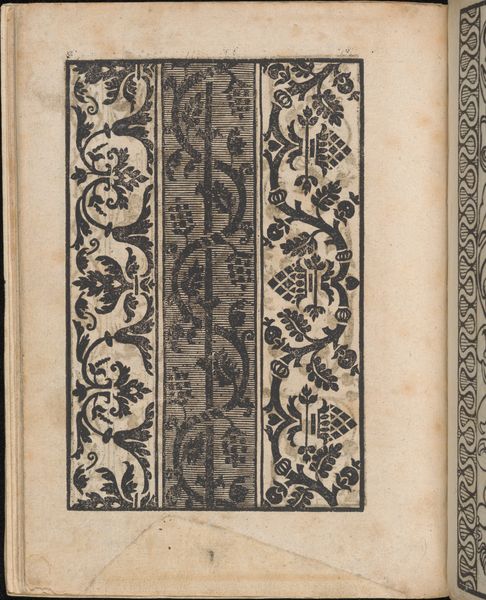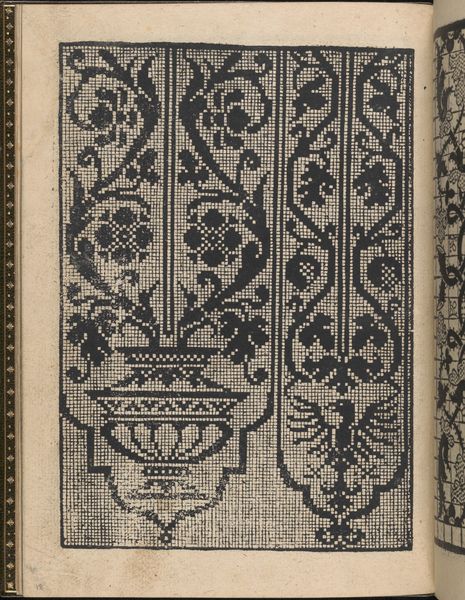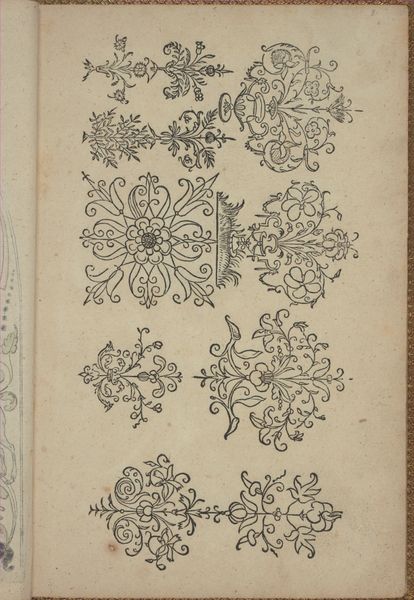
drawing, graphic-art, ornament, print, engraving
#
drawing
#
graphic-art
#
ornament
# print
#
book
#
italian-renaissance
#
engraving
Dimensions: Overall: 7 13/16 x 6 3/16 x 3/8 in. (19.8 x 15.7 x 1 cm)
Copyright: Public Domain
Editor: This is a page from "Essempio di recammi," or "Examples of Embroidery," created by Giovanni Antonio Tagliente in 1530. It's a graphic art print - an engraving, I believe. It has a very strong visual pattern - a frame design, almost like a carpet, with floral motifs and creatures. What do you see when you look at it? Curator: The overall design operates as a self-contained system of visual relationships. The interplay of positive and negative space within the arabesque central medallion establishes a formal tension with the grid-like pattern of the background. Consider, too, how the organic forms of the vines and foliage are juxtaposed against the geometric borders. Editor: So you are pointing to a push and pull - contrasts in style happening at the same time. What about the strange creatures along the bottom? Curator: Indeed. Their inclusion disrupts the harmony. Ask yourself what purpose they serve within the visual economy of the piece. Do they reinforce or challenge the established aesthetic order? Furthermore, consider how the line work contributes to the overall effect. The variations in thickness and density articulate depth and texture. Editor: I never thought about the line work itself creating texture. This is such a focused design; every aspect is so detailed and precise! Curator: It’s in the delicate articulation of the components and their interrelation that we can glean understanding. What emerges, then, through our focused observation? Editor: It highlights how crucial every element is within a carefully thought-out visual arrangement. Thanks, this really helped clarify how all of the image components create a structural pattern with meaningful effect.
Comments
No comments
Be the first to comment and join the conversation on the ultimate creative platform.
